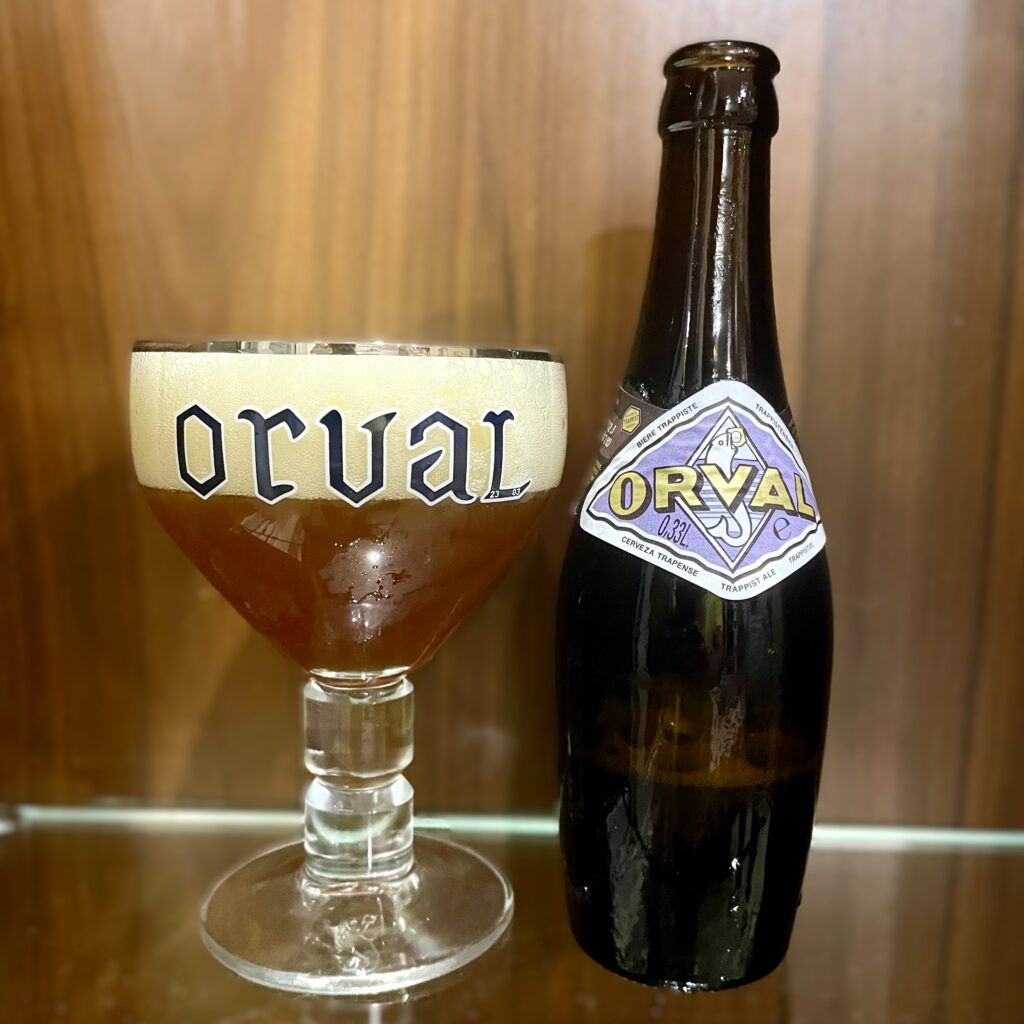Orval Beer is Brewed within the walls of the Abbey Notre-Dame d’Orval, a Cistercian monastery founded in 1132, Orval’s story is steeped in legend
Beer Name: Orval Beer
Manufacturer: Notre-Dame d’Orval Abbey
Origin: Orval Abbey, Wallonia, Belgium
Company Founded in: 1132
Beer Type: Triple Fermented Trappist Ale
SRM (Colour): 20
Abv (Alcohol) 6.2
IBU (Bitterness): 10



Orval, a bière unique (unique beer) even amongst the esteemed Trappist ales of Belgium, boasts a rich history and a flavor profile that defies easy categorization.
My Orval Beer Experience
As the tale goes, the noblewoman Mathilda of Tuscany, upon losing her wedding ring in a spring, received its return from a trout. In gratitude, she endowed the establishment of the monastery, hence the name Orval, derived from the French “Val d’Or,” meaning “Valley of Gold.” The iconic image of a trout with a ring adorns Orval’s label to this day, a silent testament to its origins


Unlike its Trappist brethren, Orval offers only one beer to the public. This singular expression, however, is a revelation.
Pouring a cloudy russet color, Orval is crowned with a dense, white head that lingers impressively. Unlike many ales, Orval’s head holds strong, leaving a beautiful lacing on the glass as you drink. This is more than a beer; it’s an experience in color, texture, and anticipation.

The aroma is subtle, offering hints of brown bread and perhaps a touch of fruits. The first sip is a delightful surprise. A gentle bready character forms the base, overlaid with a refreshing sourness reminiscent of tart. But Orval is more than a one-note wonder. The dry hopping with Hallertau Hop and other hops provides a subtle spiciness, while the unique touch comes from Brettanomyces, a wild yeast that imparts a hint of barnyard funk.
These seemingly disparate elements weave a delightful tapestry on the palate, both complex and satisfying. The beer’s complexity is a testament to its triple fermentation process (read more about it in the end), culminating in a harmony of flavors that linger long after the glass is empty.

As Orval matures, the beer undergoes a fascinating transformation. The beer becomes drier, and the sour notes become more pronounced. This characteristic makes Orval a perfect candidate for cellaring, allowing adventurous beer lovers to experience its evolution over time.
Whether enjoyed young or aged, Orval is a truly unique and unforgettable beer. Its singular focus, complex flavor profile, and intriguing history solidify its place as a legend among beers
So, next time you encounter this enigmatic brew, take a moment to appreciate its rich heritage and savor the symphony of flavors it offers.



triple fermentation process Beer
The triple fermentation process in Orval beer is a unique and integral aspect of its production, contributing to the beer’s distinctive flavor profile and character. Here’s a breakdown of each stage:
Primary Fermentation: Orval undergoes the initial fermentation process, similar to many other beers. This stage typically involves the conversion of sugars into alcohol by yeast, creating the base beer.
Dry Hopping and Maturation: After the primary fermentation, Orval takes a unique turn. The beer is dry-hopped, which involves the addition of hops after the initial fermentation. This step imparts additional aroma and flavor to the beer without significantly increasing its bitterness. Following dry hopping, Orval matures in horizontal tanks for about three weeks. During this time, the beer continues to develop its flavor profile, integrating the hop character with the base beer.

Secondary Fermentation in the Bottle: The most distinctive aspect of Orval’s fermentation process is its secondary fermentation, which occurs in the bottle itself. Before bottling, a small amount of yeast, including Brettanomyces, is added to the beer. This “wild” yeast strain introduces unique flavors and aromas, including characteristic funkiness and complexity, as it continues to ferment the beer in the sealed bottle. This secondary fermentation also contributes to the beer’s natural carbonation.

Overall, the triple fermentation process of Orval beer involves the initial fermentation, dry hopping and maturation, and secondary fermentation in the bottle. Each stage plays a crucial role in shaping Orval’s flavor profile, resulting in a beer that is renowned for its complexity, depth, and evolving character over time.